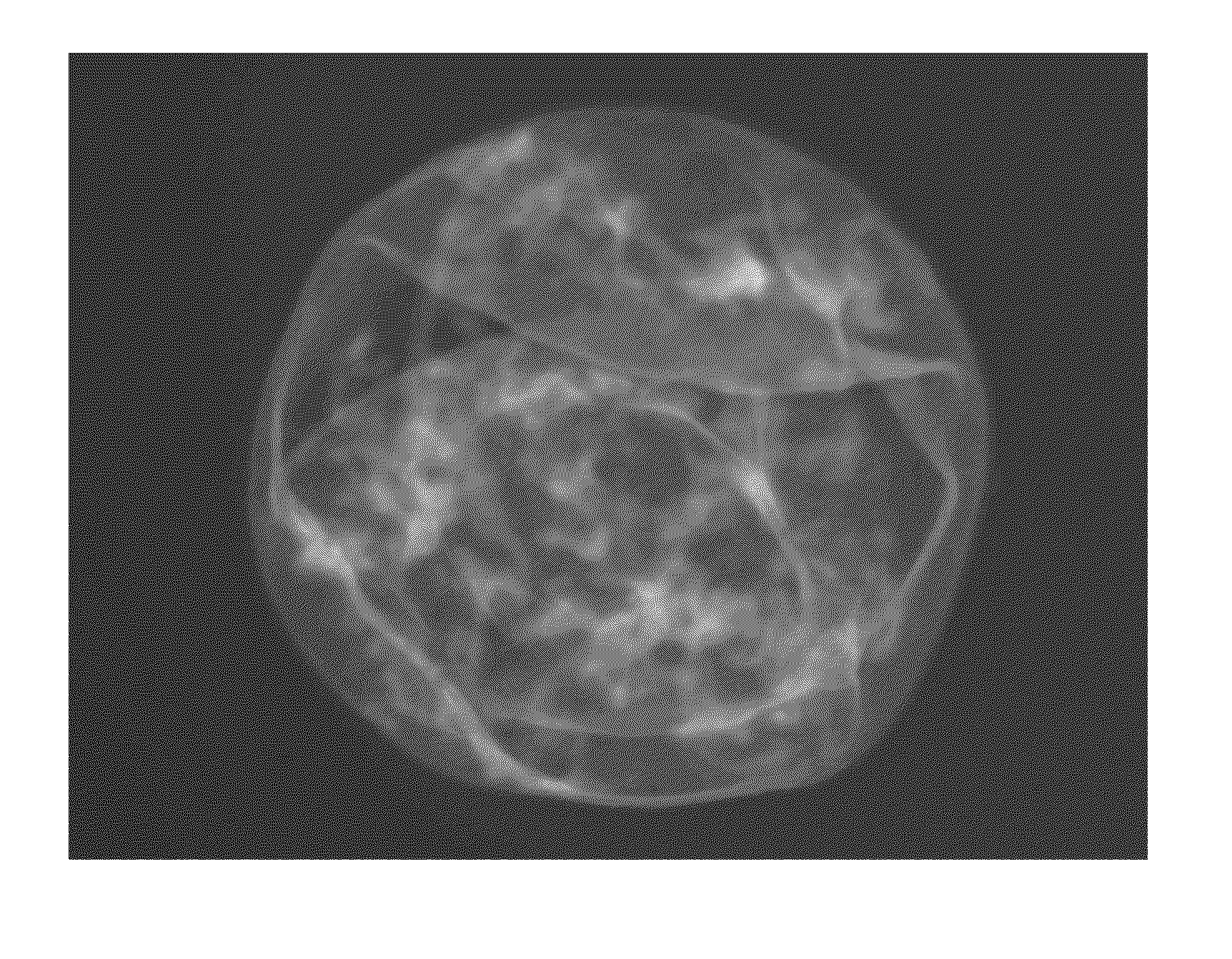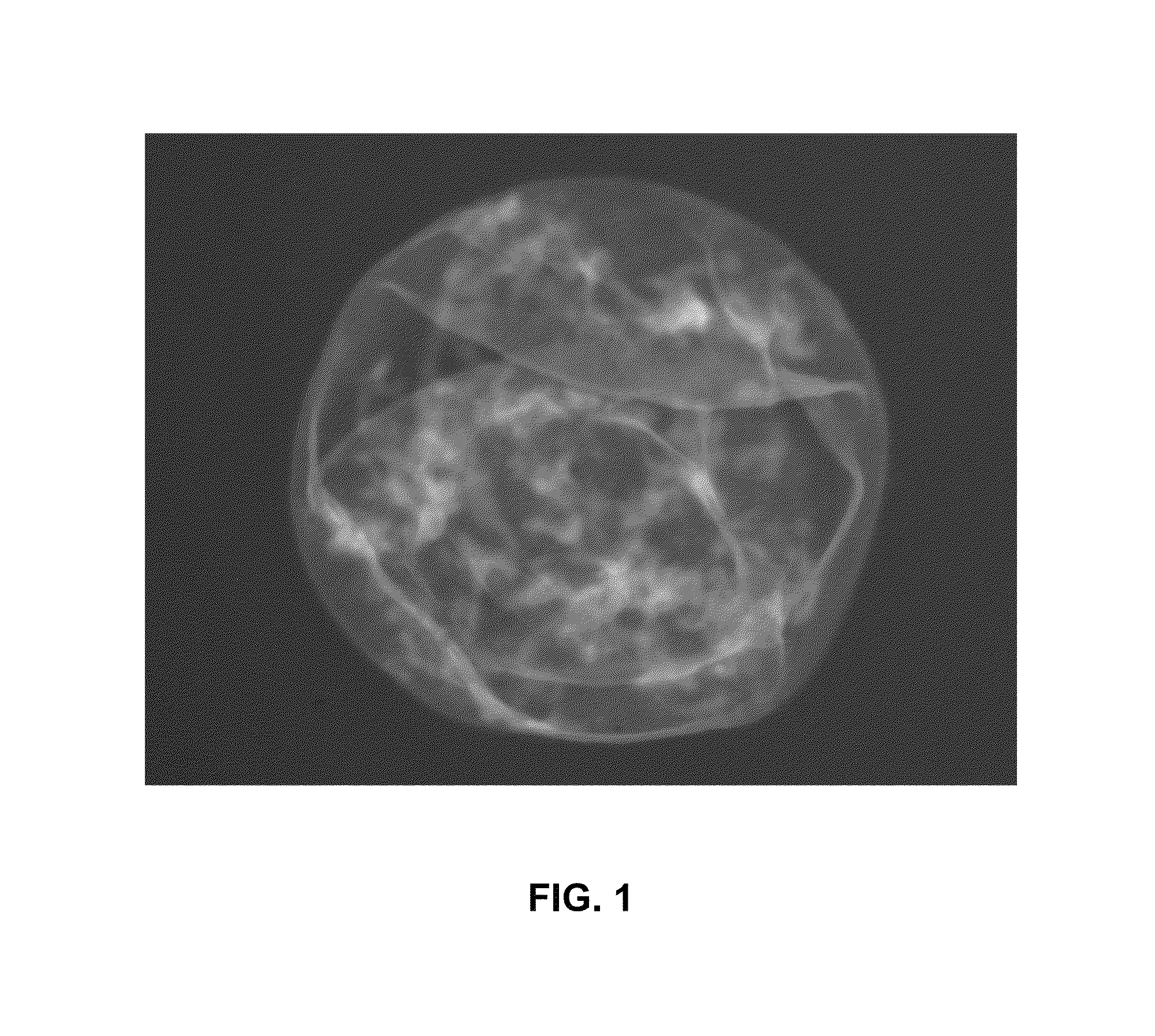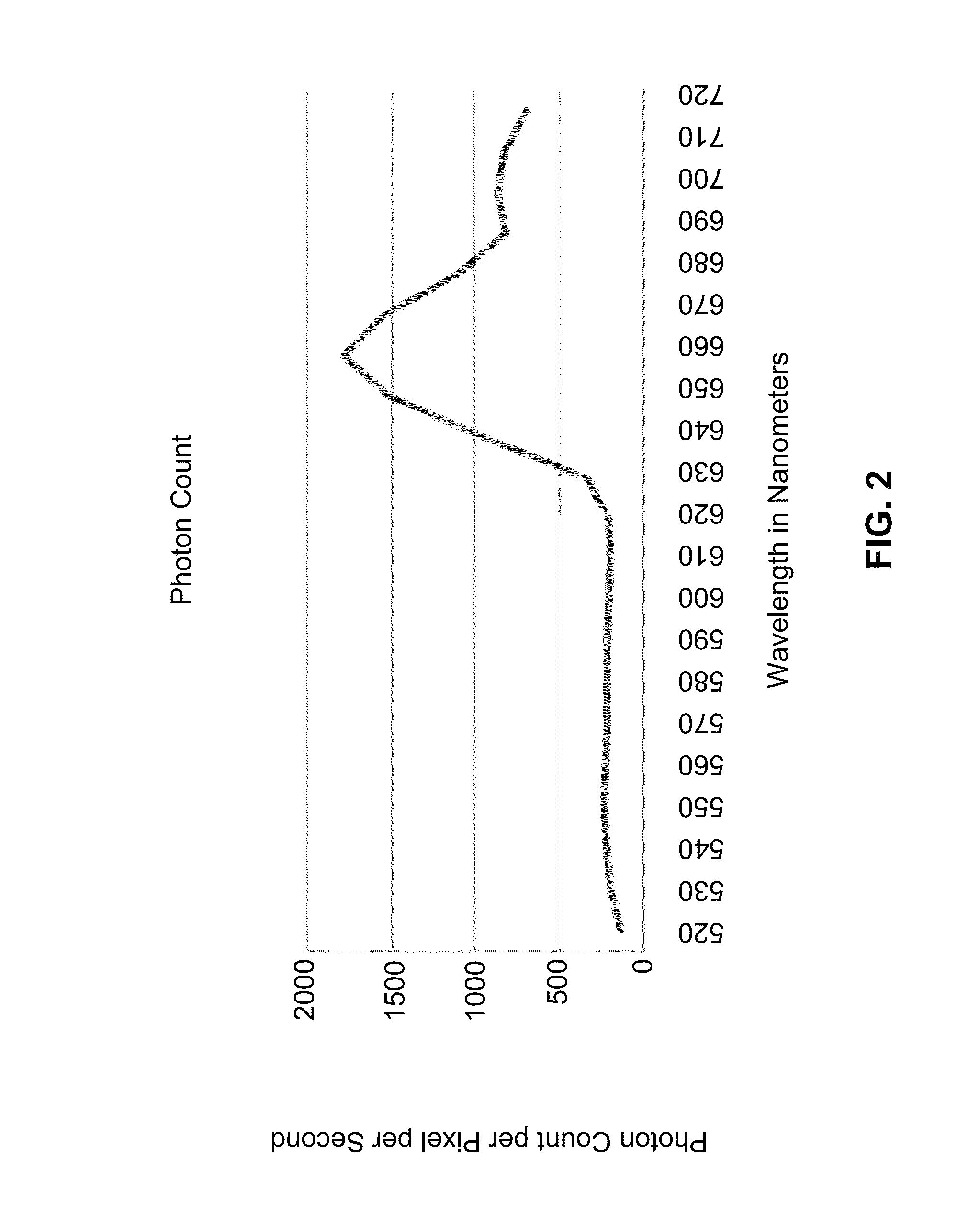System and method for analyzing samples labeled with 5, 10, 15, 20 tetrakis (4-carboxyphenyl) porphine (TCPP)
a technology of tetrakis and porphine, which is applied in the field of system and method for analyzing samples labeled with tetrakis (4-carboxyphenyl) porphine (tcpp), can solve the problems of poor prognosis for lung cancer patients, reduced cancer development, and inconvenient analysis
- Summary
- Abstract
- Description
- Claims
- Application Information
AI Technical Summary
Benefits of technology
Problems solved by technology
Method used
Image
Examples
Embodiment Construction
[0033]As used herein “a” means one or more.
[0034]As used herein “CCD” means Charge Coupled Device.
[0035]As used herein sample “a biological sample” or “sample” or “specimen” refers to a whole organism or a subset of its tissue, cells or components parts (body fluids, including but not limited to blood, mucus, lymphatic fluid, sputum, plasma, ejaculate, mammary duct fluid, cerebrospinal fluid, urine, and fecal stool.
[0036]According to one embodiment of the present invention, a system and method for determining the amount of photon emission from TCPP bound to a cell of interest thought to be cancerous relative to the amount of photon emission from TCPP from non-cancerous cells is provided. Since we are determining relative amounts of fluorescence, with all the cells in the same environment, we are not limited to the actual quantum yields of the individual fluorophores. One embodiment of the present invention provides for determination of photon emission from specimens with Equation 1 ...
PUM
| Property | Measurement | Unit |
|---|---|---|
| wavelengths | aaaaa | aaaaa |
| wavelengths | aaaaa | aaaaa |
| wavelengths | aaaaa | aaaaa |
Abstract
Description
Claims
Application Information
 Login to View More
Login to View More - R&D
- Intellectual Property
- Life Sciences
- Materials
- Tech Scout
- Unparalleled Data Quality
- Higher Quality Content
- 60% Fewer Hallucinations
Browse by: Latest US Patents, China's latest patents, Technical Efficacy Thesaurus, Application Domain, Technology Topic, Popular Technical Reports.
© 2025 PatSnap. All rights reserved.Legal|Privacy policy|Modern Slavery Act Transparency Statement|Sitemap|About US| Contact US: help@patsnap.com



